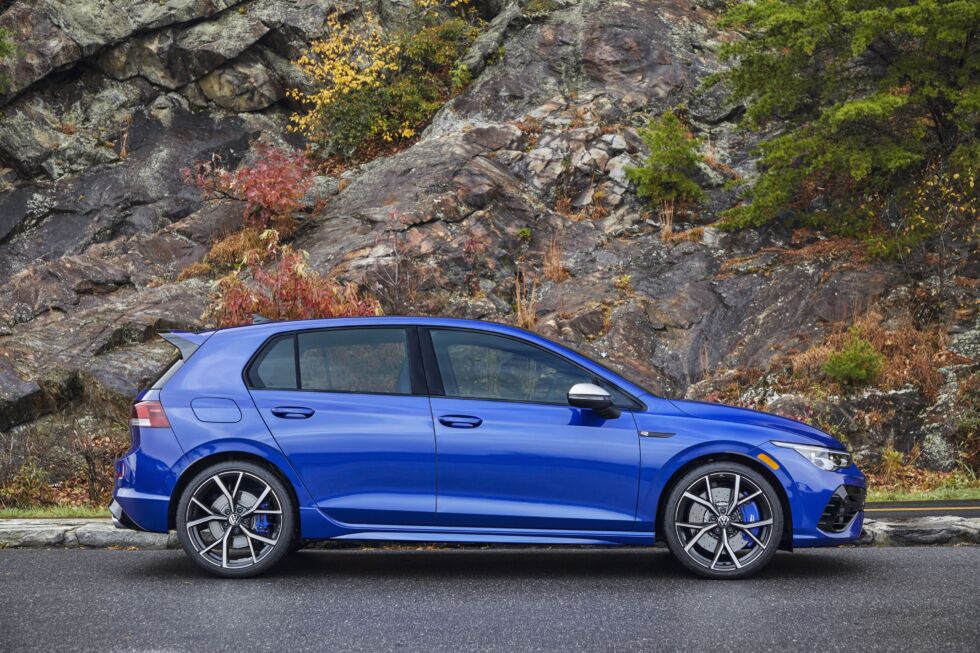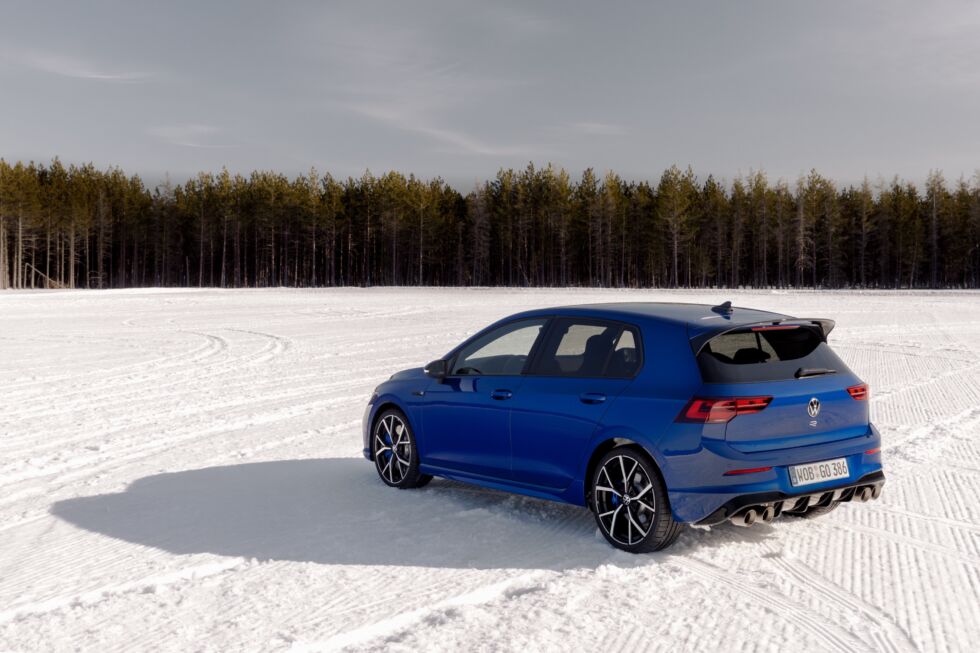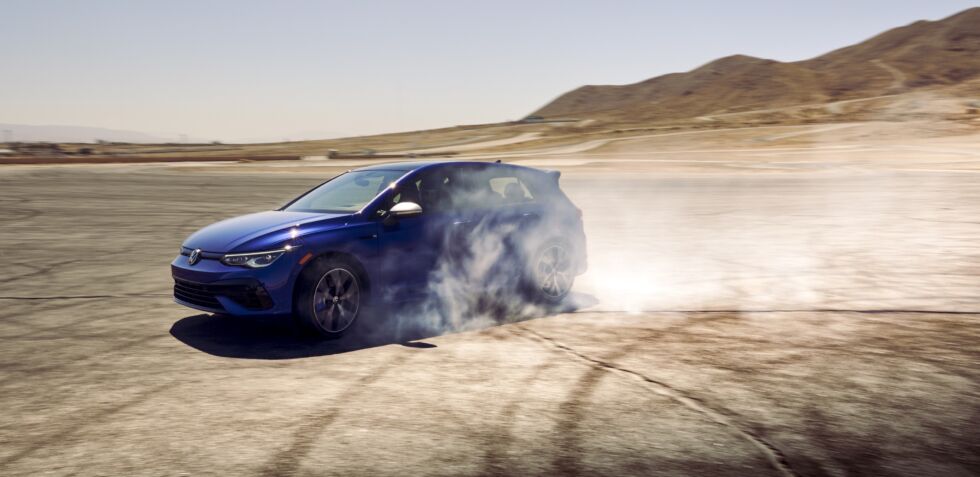

Volkswagen
In the past, the arrival of a new generation of Volkswagen Golfs would be big news. But VW’s post-dieselgate pivot to electrification and the advent of its new purpose-built EVs, together with a global pandemic and ongoing supply chain problems, have all conspired to take a little wind out of those sails. And sales.
Here in the US, the Golf never really achieved the levels of egalitarian chic that it did in Europe, to the point that VW of America has dropped all the lesser models in the line. Instead, we’re just getting the Golf GTI and its more powerful all-wheel drive (AWD) sibling (the car you see here today), the $43,645 Golf R.
Volkswagen first bolstered the Golf range with a Golf R in 2002—the R32—which shoehorned VW’s VR6 engine and an on-demand AWD powertrain into an Mk4 Golf. The R32 reappeared with the Mk5 Golf; for subsequent generations, it dropped the numbers and just became the Golf R.

Volkswagen
This AWD überhatch has always been a bit more upmarket than the hot hatch GTI—more subtle than a boy racer-mobile to look at and more refined to drive. At least until now. For the Mk8, the Golf R has had quite the personality change compared to the older model we tested in 2019.
For starters, VW has turned the turbocharged four-cylinder EA888 engine up, boosting power by nine percent to 315 hp (235 kW) and torque by five percent to 295 lb-ft (400 Nm). There’s new variable cam phasing, and the exhaust headers have been integrated into the cylinder head, which helps thermal management and efficiency at high loads. The direct-injection fueling system has had a pressure increase from 2,900 psi (200 bar) to 5,076 psi (350 bar), and engine friction has been reduced.
It’s the Golf R’s AWD system that represents the biggest change from previous generations. In the past, VW used a Haldex AWD system that could send up to (but no more than) half of the engine’s torque to the rear wheels. But for this version, VW has opted instead for a torque-vectoring rear differential that can send 100 percent of the engine’s torque to an individual wheel (via a multiplate clutch).

Volkswagen
We have experienced similar torque-vectoring diffs in a number of other vehicles, particularly the Ford Focus RS and its drift mode. (However, the Ford unit comes from GKN; VW sources its version from Magna.) That Ford was a natural competitor to the old Golf R—both were AWD überhatches, after all—but where the mk7 Golf R was subtle, the Focus RS embraced the hooligan side of things.
Well, the spirit of the Focus RS is actually alive and well in the new Golf R. There are all-new control algorithms for the computers that coordinate the engine mapping and that differential, plus the suspension damping and the traction and stability control systems. Comfort is obviously the softest and most laid-back of the drive modes, with things getting increasingly frenetic as you escalate through Sport, then Race.
As in the old Focus RS, there’s also a Drift mode, which uses the diff’s ability to send all the torque to just one rear wheel—in this case, the outside wheel. Drift mode is not meant for public roads, and the car makes you acknowledge that fact via an infotainment prompt that requires confirmation to engage.

Volkswagen
The Special drive mode is also just for the track—and perhaps one track in particular. VW has optimized the Golf R’s brains in this setting for the famed Nürburgring Nordschleife, a 12-mile (22-km) race track in Germany that some know as the “green hell.” VW says that in Special mode, the torque vectoring is optimized for the Nürburgring’s corner profiles, and the suspension is softer than in Race because of the track’s bumps.
I did not drive the Golf R at the Nordschleife, sorry to say. Nor did I drive it on track anywhere, so I can’t report on either Drift or Special modes. But I did exercise a Golf R on the rather twisty Angeles Crest Highway in California and on some local roads back home, and my experiences revealed a few things.
At lower speeds and within the normal envelope of daily driving, the driving experience is unremarkable in the way most Golfs are. It’s a competent everyday car that’s easy to see out of, with control weights that don’t require unreasonable effort. If you only ever used the first third of the throttle travel, you could very well be in a base-model Golf, except that they’re not imported to the US anymore.